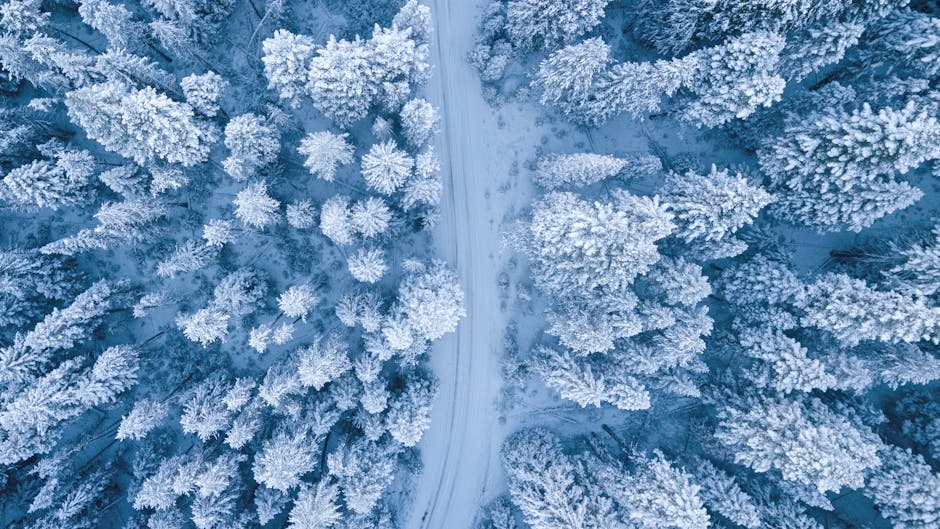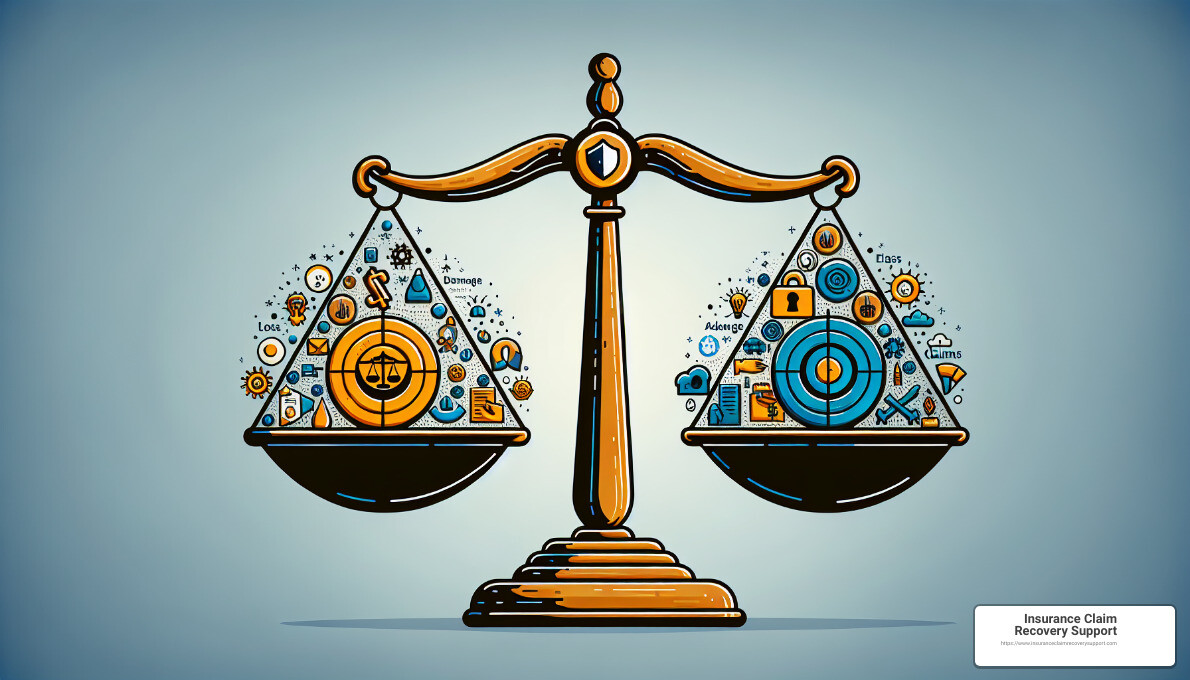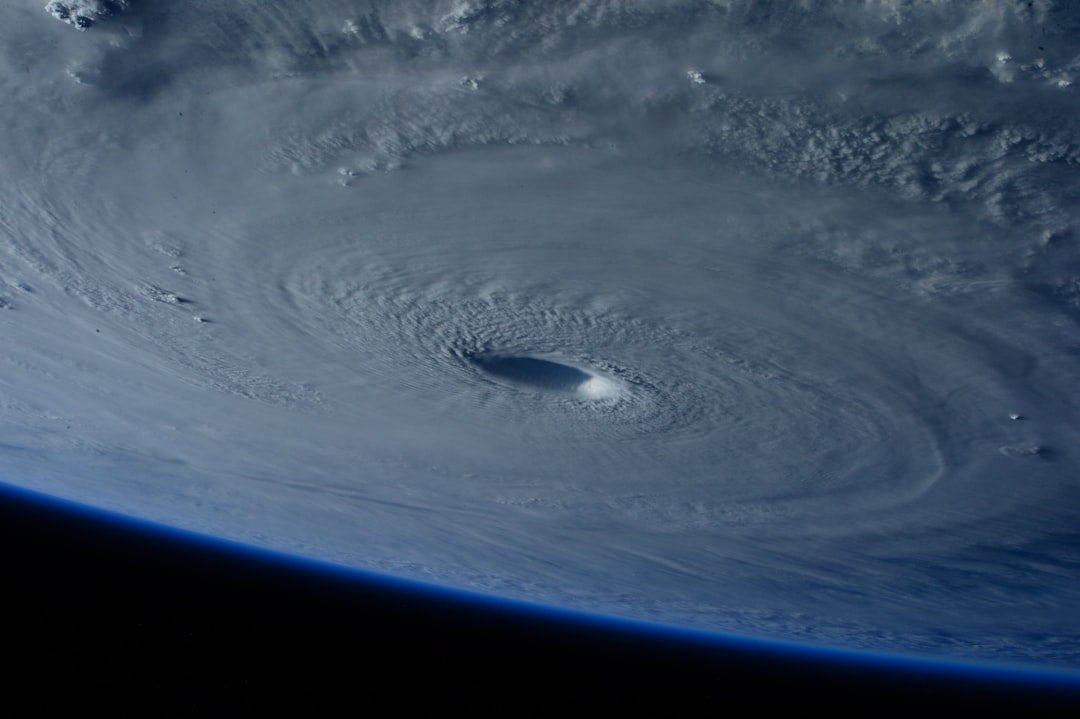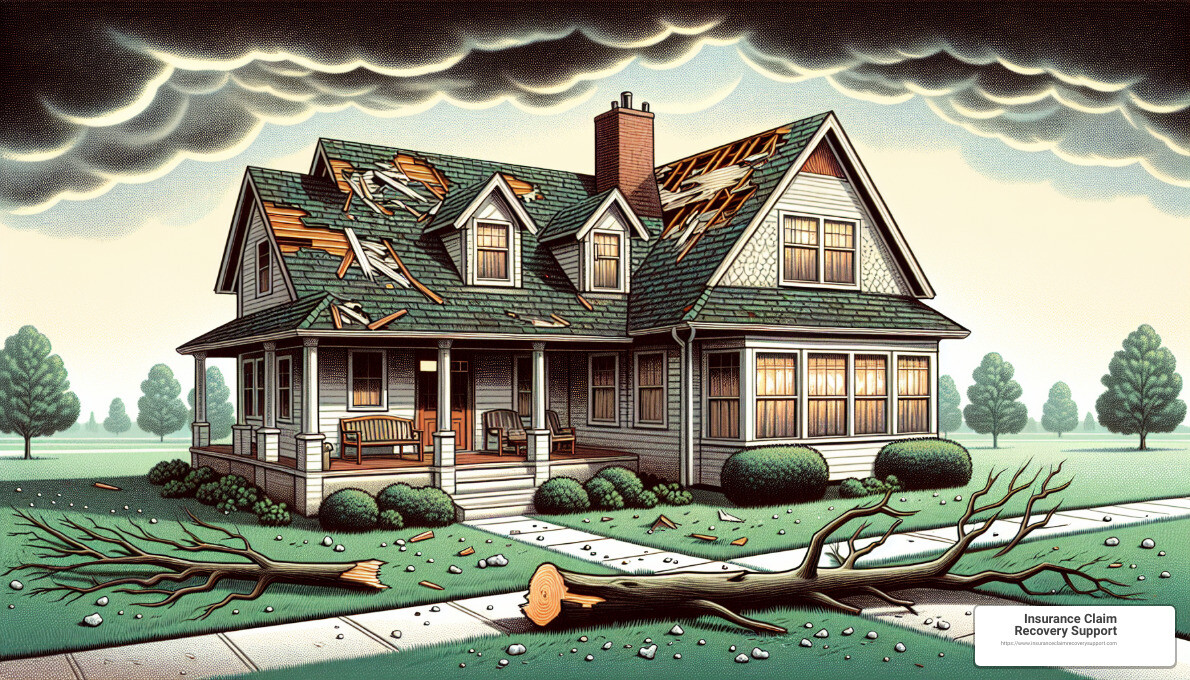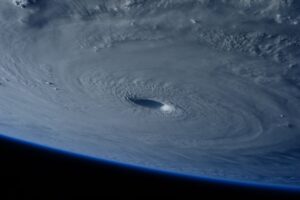In February 2021, Texas experienced a historic freeze that pushed the limits of what the state, known for its hot and dry climate, could withstand. This event, often referred to as the ‘Texas Freeze’, not only shattered records but also lives, infrastructure, and the natural environment. It was a stark reminder of the volatile and unpredictable nature of weather in the Lone Star State, and a wakeup call for better preparedness against extreme weather events.
The freeze was notable for its ferocity and breadth, affecting every county in Texas. It was caused by a combination of atmospheric conditions, including a strongly negative Arctic Oscillation and a disrupted polar vortex, leading to an unprecedented drop in temperatures. This deep freeze resulted in massive power outages, water system failures, and over 200 deaths, marking it not just as a meteorological anomaly but a large-scale natural disaster.
Historically, Texas has faced various harsh weather conditions, from sweltering heatwaves to devastating hurricanes, but the 2021 freeze was unparalleled in recent memory. Its impacts were severe, widespread, and deeply felt across communities, ecosystems, and the economy.
For those urgently seeking a concise understanding of the Texas Freeze, here’s a quick snapshot:
– Event: Historic freeze in February 2021
– Impact: Massive power outages, water system failures, over 200 deaths
– Cause: Combination of a strongly negative Arctic Oscillation and a disrupted polar vortex

Understanding the Texas Freeze is crucial for everyone in the state, especially for property owners, investors, and organizations affected by the disaster. It’s about acknowledging the past, facing current challenges, and preparing for the future with better infrastructure, policies, and emergency response strategies to mitigate the effects of such extreme weather events.
The Meteorological Phenomenon Behind the Texas Freeze
In February 2021, Texas experienced an extreme weather event that caught many off guard. To truly understand the Texas Freeze, we need to dive into two key meteorological phenomena: the Arctic Oscillation (AO) and the Polar Vortex. These terms might sound complex, but they’re crucial to grasping why Texas turned into a winter wonderland.
Arctic Oscillation (AO)
Imagine the Arctic Oscillation as a seesaw of atmospheric pressure between the Arctic and the mid-latitudes, like the United States and Europe. When the AO is in its positive phase, this seesaw tilts in such a way that cold Arctic air is kept up north, leading to milder winters in the mid-latitudes. However, during the Texas Freeze, the AO was strongly negative. This means the seesaw tilted the other way, allowing icy Arctic air to plunge southward into places that rarely see such cold, including Texas.
Polar Vortex
Now, let’s talk about the Polar Vortex, which sounds like something out of a science fiction movie but is very much a real and normal part of our planet’s climate system. Picture it as a giant whirlpool of cold air spinning around the North Pole, high up in the atmosphere. When the Polar Vortex is strong, it keeps this pool of cold air locked up tight. However, when it weakens or gets disturbed, parts of this whirlpool can break off and wander south, bringing Arctic weather with them. During the Texas Freeze, this is exactly what happened. The vortex was disrupted, allowing frigid air to escape and travel far from its usual home.

So, why did these phenomena combine to create the Texas Freeze? It was a bit like a perfect storm. The strongly negative AO allowed the cold air to start moving southward. Then, a disrupted Polar Vortex sent that cold air on a direct trip to Texas. This combination is not common, which is why the event was so historic and impactful.
Understanding these meteorological phenomena helps us see the Texas Freeze was not just a fluke, but a result of specific atmospheric conditions. It reminds us of the importance of being prepared for a wide range of weather events, even those that seem unlikely.
Moving forward, we’ll explore the timeline of events that led to the Texas Freeze, detailing how this meteorological one-two punch played out day by day across the state.
Timeline of the Texas Freeze Events
The Texas Freeze in February 2021 was a wake-up call for many. It showed us how quickly weather can change and the vast impact it can have on our lives. Let’s break down what happened, when it happened, and how it affected people and infrastructure.
February 2021: A Month to Remember
February 10-11: The first signs of trouble began with a winter storm forming north of the Gulf coast, bringing sleet and ice across several states, including Texas. This was just a preview of what was to come.
February 13: A second storm developed off the Pacific Northwest and moved toward Texas, growing more organized and powerful. This storm, along with others, covered over 75% of the U.S. in snow.
February 15-20: A third winter storm hit, causing widespread power outages and contributing to a disastrous week for Texans. The power grid was pushed to its limits, and millions found themselves without electricity in freezing temperatures.
Record-Breaking Cold
During this period, temperatures plummeted to historic lows. Dallas/Fort Worth International Airport recorded a chilling −2 °F (−19 °C) on February 16, the coldest in North Texas in 72 years. These temperatures were not just numbers on a thermometer; they represented a serious threat to life and property.
Power Outages: The Dark Side of the Freeze
At the peak of the crisis, nearly 10 million people were without power. The Electric Reliability Council of Texas (ERCOT) found itself in a dire situation, with the state’s power grid “seconds or minutes away from” complete failure. This was due to a combination of factors, including frozen wind turbines and a significant drop in power production from natural gas facilities, which were not prepared for such extreme cold.
The impact was immediate and severe. Without power, residents couldn’t heat their homes. Water pipes froze and burst, leading to widespread damage and further complicating the situation. The infrastructure failures were not limited to residential areas; they also affected hospitals, emergency services, and more.
This timeline of the Texas Freeze events paints a clear picture of how quickly a situation can escalate when extreme weather hits. It underscores the importance of being prepared and highlights the need for improvements in infrastructure to withstand similar events in the future. It’s crucial to learn from the Texas Freeze and take steps to ensure that we’re better prepared for whatever Mother Nature throws our way next.
Impact of the Texas Freeze
Human Toll
The Texas Freeze wasn’t just a weather event; it was a human crisis. Over 200 lives were lost, making it a tragedy that touched families across the state. People suffered from hypothermia in their own homes, a condition that’s preventable but deadly without heat. Additionally, there were at least 300 cases of carbon monoxide poisoning as people, desperate for warmth, made dangerous choices like running cars and generators indoors.
Infrastructure Failures
The backbone of any community during a crisis is its infrastructure, and Texas faced unprecedented failures. The power grid was overwhelmed, leading to widespread outages. At its peak, over 5 million people were without electricity. The water systems were also hit hard; pipes froze and burst, disrupting service for over 12 million people. Gas production, essential for heating and electricity, was hampered, affecting supply when it was needed most.
Environmental and Wildlife Consequences
The environmental impact was significant. Pollution releases spiked due to the stopping and starting of fossil fuel infrastructure. This included the release of one ton of benzene, a known carcinogen, and other harmful pollutants. The freeze was catastrophic for marine life too, with 3.8 million fish killed along the Texas coast. Over 60 species were affected, setting back conservation efforts by years. Sea turtles, cold-stunned by the sudden drop in temperature, were left helpless, prompting rescue efforts to save as many as possible.
This section of our guide on the Texas Freeze paints a stark picture of the event’s far-reaching impacts. From the loss of human life to the environmental toll and the strain on infrastructure, the consequences were severe. As we look ahead, understanding these impacts is crucial for building resilience and ensuring that Texas is better prepared for future freezes. The next section will delve into preventative measures and future preparedness, exploring how we can safeguard against such devastating events moving forward.
Preventative Measures and Future Preparedness
In the wake of the Texas Freeze, it’s clear that steps need to be taken to prevent such a disaster from happening again. Let’s dive into what’s being done and what you need to know about weatherization, ERCOT reforms, and Senate Bill 3.
Weatherization: Protecting the Power
Weatherization means making sure that power plants and infrastructure can handle extreme cold. After the freeze, it was evident that Texas’ power grid wasn’t ready for such low temperatures. The solution? Making sure that power plants, gas extraction sites, and the infrastructure that supports them are equipped to operate in freezing conditions.
ERCOT Reforms: A New Direction
ERCOT, or the Electric Reliability Council of Texas, came under heavy scrutiny after the freeze. The organization is responsible for managing the state’s power grid. In response to the crisis, Governor Abbott called for ERCOT reform an emergency item. This means looking at how ERCOT operates and making changes to improve reliability and prevent future blackouts.
Senate Bill 3: The Legislative Response
In June 2021, the Texas Legislature passed Senate Bill 3. This bill is a big deal because it requires power plants to weatherize against extreme weather. It also looks at the gas supply, making sure it’s reliable during cold snaps. However, it’s worth noting that while power plants now have to meet new weatherization standards, gas supply companies aren’t under the same requirements yet.
Key Points to Remember:
- Weatherization is about making our power infrastructure cold-weather-proof.
- ERCOT reforms are in the works to ensure better management and reliability of Texas’ power grid.
- Senate Bill 3 is a significant step toward preventing future power outages by requiring power plants to be ready for extreme weather.
Moving forward, these measures are crucial for Texas’ preparedness against future freezes. Weatherizing power infrastructure and ensuring reliable gas supplies during cold weather are essential steps. Likewise, ERCOT’s reforms aim to improve the oversight and reliability of the state’s power grid. Together, these actions represent a comprehensive approach to safeguarding Texas against the devastating impacts of severe winter weather.
As we continue to navigate the aftermath of the Texas Freeze and work towards a more resilient future, it’s clear that preparedness, informed by the lessons of the past, is our best defense against the unpredictable forces of nature.
In our next section, we’ll address some of the most Frequently Asked Questions about the Texas Freeze, providing you with clear, straightforward answers to your pressing concerns.
Frequently Asked Questions about the Texas Freeze
As we look back on the events of the Texas Freeze, many questions come to mind about what happened, how cold it got, and what caused the extensive power outages. Let’s dive into some of the most common questions.
How cold was the Texas freeze?
During the Texas Freeze in February 2021, temperatures plummeted to record lows across the state. Dallas/Fort Worth International Airport recorded a chilling -2 °F (-19 °C), marking the coldest temperature in North Texas in 72 years. Across the state, temperatures were so low that they fell below those in Anchorage, Alaska, a rare occurrence highlighting the severity of the freeze.
What caused the power outages during the Texas freeze?
The power outages during the Texas Freeze were primarily due to the failure of the state’s power grid to handle the extreme cold. Equipment at natural gas, coal, and nuclear power plants froze, and there were mechanical failures. Although initial blame was placed on renewable energy sources like wind turbines, it was later acknowledged that the loss of power from natural gas was five times greater than that from wind. The Electric Reliability Council of Texas (ERCOT) was aware of the likelihood of blackouts but the demand for electricity exceeded their highest winter weather planning scenarios. The system was minutes away from a total shutdown, which would have required a slow and costly process to restart, known as a black start.
Is Texas expecting a cold winter in 2023?
Predicting weather with absolute certainty is always challenging, especially months in advance. However, weather forecasts and climate predictions can offer some insights based on current patterns and historical data. It’s essential for Texans to stay updated with the latest weather forecasts from reliable sources and to prepare for winter each year, considering the lessons learned from the 2021 Texas Freeze. Preparations include weatherizing homes, understanding the vulnerabilities of the state’s power grid, and staying informed about any reforms or improvements made by ERCOT and other entities to prevent future power outages.
Being prepared and informed is key to navigating whatever the winter of 2023 may bring to Texas. Stay warm, stay safe, and stay informed.
Conclusion
The Texas Freeze of February 2021 was a wake-up call for many. It showed us the importance of being prepared, the value of community, and the critical need for expert support in times of crisis. This is where Insurance Claim Recovery Support steps in.
Insurance Claim Recovery Support
We are here to guide you through the aftermath of events like the Texas Freeze. Our mission is to stand beside you, offering our expertise and support to navigate the often complex and frustrating world of insurance claims.
Advocacy for Policyholders
We believe in advocating for you, the policyholder. It’s easy to feel lost in the shuffle after a disaster, especially when dealing with large insurance companies. Our role is to ensure your voice is heard, your rights are respected, and your claims are taken seriously.
Maximizing Settlements
Our goal is to maximize your settlement. We understand the nuances of insurance policies and how to document and argue for the fullest possible compensation for your losses. Whether it’s damage from burst pipes, collapsed structures, or any other freeze-related damage, we’re here to ensure you receive the settlement you deserve to rebuild and recover.
In the wake of the Texas Freeze, the road to recovery may seem daunting. However, with Insurance Claim Recovery Support by your side, you have a dedicated partner in your corner. We’re committed to not just settling claims but building relationships and providing peace of mind during stressful times.
For more information on how we can assist you with your insurance claim, visit our loss types service page. Let us be your guide and advocate in securing the settlement you need to move forward.
The Texas Freeze taught us the importance of preparation, community support, and professional guidance. As we look ahead, let’s take those lessons to heart. Stay prepared, stay connected, and when in need, let us help you navigate the path to recovery.

